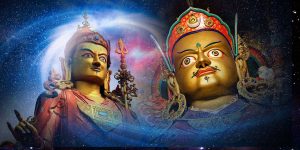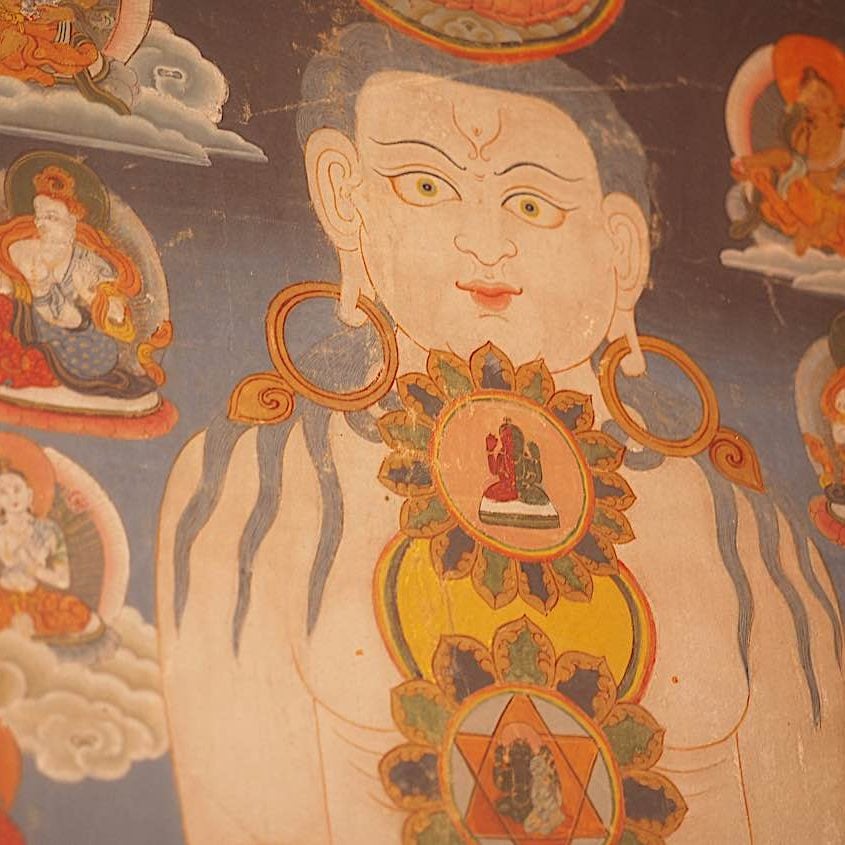The “Four Rs” of the Lunar Year End in Buddhism: Vital Vajrasattva Practice and Pre-Losar Traditions Explained
Sweeping away the obstacles, bad karma, bad luck and negativities of the old year, going into a new year with a purified “clean slate”, is an important lunar New Year practice in Buddhism. (This Year Losar falls on Feb 10. Purification practices ideally should be performed Feb 3-9.)
It’s also an important practice before formal retreats, important ventures and dedications, or any important “launch” of something new. Or, just anytime. It is critical to purify negative karma endlessly, since our lives are impermanent.

Vajrasattva practice is certainly the most popular purification and renewal process for “year-end.” Prior to Losar or Lunar New Year, it is important to do a de-clutter and cleanse. Starting off the New Year with blessings and offerings to the Three Jewels is important, but first, we try to purify the stains from the previous year.
Vajrasattva, which combines all the principles of karmic purification, is the ultimate Buddhist practice for clearing obstacles, negativities, curses, evil intentions of others, and our own internal demons. Simply reciting his 100-syllable mantra while visualizing white cleansing light filling our bodies — when combined with the four powers of Refuge or dependence on the Three Jewels, Regret and of our past negative actions, the Remedy of the mantra and visualization, and the intention to Refrain in future.

These are called the four Rs in short:
- Refuge (or Rely, if you prefer)
- Regret
- Remedy
- Refrain.
By setting our minds and intentions to the remedies at the end of the year, we start the new year off fresh and clean, ready to accumulate Dharma merit through virtuous practices, giving, and compassion.
Related
- For a feature on the different “New Years” in different traditions, see>>
Beautiful Chanting of Vajrasattva’s 100-Syllable Mantra in Sacred Sanskrit:
Understanding the Significance of Lunar Year End in Buddhism
Being attuned to the cyclical flow of time, Tibetan Buddhists attach profound significance to the end of the lunar year. It is seen not just as a temporal conclusion but as a pivotal period of purification, preparation, and transition — to be followed by renewal and new, pure beginnings in the new year.
The end of the lunar year, seen as a symbolic dissolution of the old, allows individuals to cleanse their spiritual slate of negative karma accumulated over the year. But, this is more than “cleaning the slate” for an individual. In Buddhist belief, groups, social groups, countries, and worlds all have their own accumulative karma. This manifests as turmoil, war, epidemic, strife, poverty, environmental instability and other ways. The goal of our practice is always to benefit all sentient beings, not just ourselves. We set out to do our part in deploying the four Rs for our wider group of regions, countries, cultures. We collectively take Refuge in the Three Jewels, regret our actions as a group, agree to remedy our bad behaviors, and Refrain from them in the future.

Vajrasattva’s 100-Syllable Purifying Mantra in Sanskrit (see video below for pronunciation and chanting!)
Oṃ Vajrasattva
samayam anupālaya
Vajrasattva tvenopatiṣṭha
dṛḍho me bhava
sutoṣyo me bhava
supoṣyo me bhava
anurakto me bhava
sarva siddhiṃ me prayaccha
sarva karma sucha me
chittaṃ śreyaḥ kuru hūṃ
ha ha ha ha ho
ḥbhagavan
sarva tathāgata vajra
mā me muñcha
vajrī bhava
mahā samaya sattva āḥ
Purifying Practices is the Main Symbolic Activity
In Tibetan Buddhist tradition, this is done primarily through a series of purifying practices and rituals which aim to clear emotional, mental, and spiritual obstacles. As a group we do temple or town-wide practices. As an individual we might practice alone, or join purication mantras and chanting online for live events, or even pre-recorded events.
These preparations before the Lunar New Year, known as ‘Losar’, target the resolution of negative patterns, attitudes, and actions. This aids in fostering a conducive environment for spiritual growth in the upcoming year. Central to this process is the usage of purification practices, which the Vajrasattva practice epitomizes.
The Vajrasattva practice, a well-respected purification ritual in the Vajrayana tradition, utilizes visualization, mantra recitation, and meditation to clear karmic imprints. It’s recommended that committed practitioners engage in such rituals with sincere intent, helping to expunge not only the root of negative karma, but its prospective recurrence.1
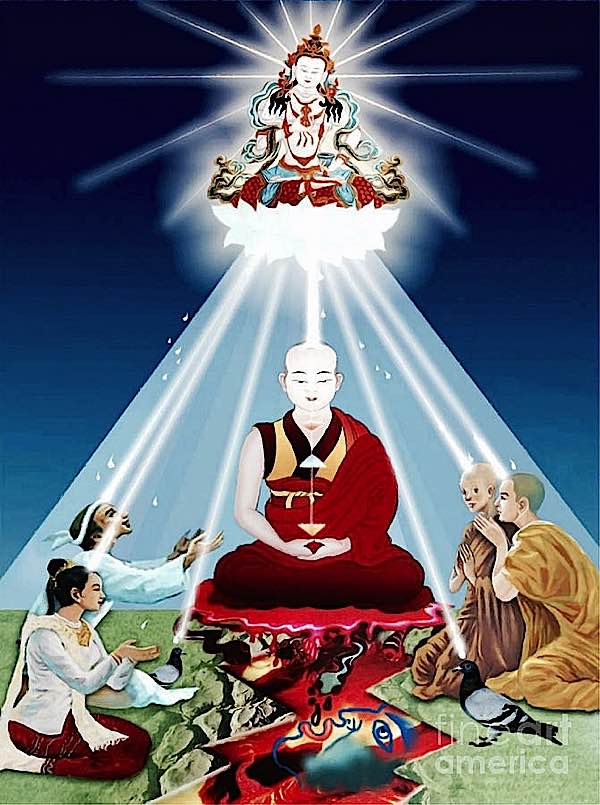
Additional activities incorporated during this time include making and consuming special foods, lighting butter lamps, and offering donations to monks or spiritual centers. These deeds are believed to generate positive karma and set a positive foundation for the approaching lunar year.2
Therefore, the advent of Losar in Tibetan Buddhism is not just about welcoming the new, but also addressing and clearing the old effectively. The process of renewal involves sincere introspection, purging harmful patterns, and setting intentions for the path ahead, fostering a holistic transition into the new year.
Vajrasattva Practice: Purification before the Lunar New Year
Even if Vajrasattva is not your Yidam, he is always the main go-to purification practice. Before starting anything new — even mundane things, such as projects at work, or moving to a new home — it is traditional to purify the old before taking on the new.
- For an in-deth feature on Vajrasattva practice see>>
In the case of the New Year, that’s the entire year. For samaller projects and ambitions, the same principle applies: Refuge (or Rely), Regret, Remedy, Refrain.
Refuge
This practice is ultimately simple. First, as with any Buddhist practice, we take Refuge in the Buddha, the Dharma and the Sangha, the Three Jewels. This can be as simple as:
I take Refuge in the Three Jewels: Buddha, Dharma and Sangha until I reach Enlightenment.
Usually, you state your refuge three times to set your intention clearly.
It is best to make offerings, even if they just mental offerings, to signify sincerity, but also to generate merit. The act of giving at any time of the year, is aupsicious and good karma. If you’d like your year end purification to be symbolized by a real action, rather than a visualized offering, this is the time of year to make extra donations to your favorite Dharma charity or other types of compassionate activity or charity. If you cannot donate money, you donate time. The idea is to make offerings in the spirit of your Dharma practice.
Regret
Now, for the remaining Rs: Regret, Remedy, and Refrain.
Meditate for a moment on what you regret. What, over the last year, do you regret the most. Especially focus not on guilt, which is not the point, but on recognizing it was negative so that you can move on to remedy and refrain. After you’ve meditated (short or long) on your shortcomings over the last year, you move on to remedy.
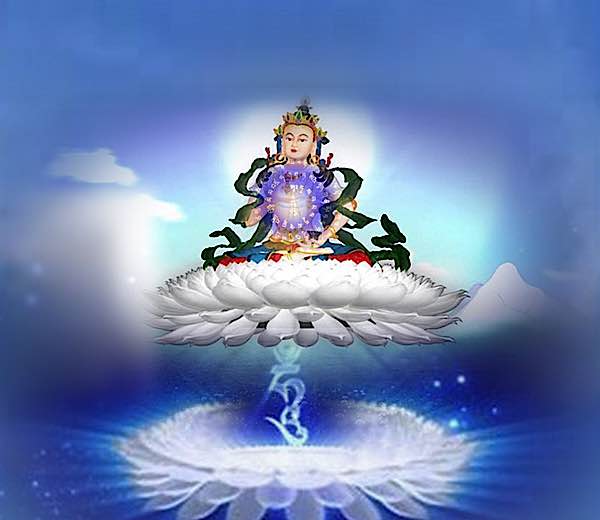
Remedy
Remedy in meditation takes symbolic and tangible forms. With most Buddhist practices it is important to involve the Body, Speech and Mind. You are here in Body, and you visualize the “body” of Vajrasattva. Speech is the mantra, which is more than a collection of sounds. It’s a centuries-proven method of focusing the mind on purification. You invoke the help of Vajrasattva and supplicate purification. The sound of the mantra is sound.
Your visualization is light. You visualize Vajrasattva as clearly as you can in front of you (or in whatever method was taught by your teacher.) Purifying white light, peaceful, pacifying light emits from the heart of Vajrasattva and enters the crown of your head. The light floods down from your crown chakra at the top of your head, from chakra to chakra until your entire body is fight with purifying radiance. The light is so intense and warm and comforting.
Mind is your regret and your refrain promise. No one is going to police you, but yourself. Your mind is the the karma police. Set your mind on your regret and your promise to refrain from the negative conduct in future.
Keep reciting over and over, until you everything but the sound of the mantra and your visualization fades away. You focus only on Vajrasattva and the sound of the mantra.
Refrain and the Eight Rights
Now, with the New Year, this year starting February 10, 2024, work on the Refrain aspects. The main teachings of Buddha, the Eightfold Path, is a conduct practice. He taught in terms of the the Eight Rights (Buddha didn’t teach “don’t do this” he taught “do this”) Specifically, he taught, at Deer Park in his first teaching:
“This is the noble eightfold way, namely, right understanding, right intention, right speech, right action, right livelihood, right attention, right concentration, and right meditation.” — Shakyamuni Buddha at Deerpark
Refraining is as simple — or not so simple as — following Buddha’s teaching on conduct: the Eightfold Path.
Of course, we all slip. Ideally, rather than wait until the end of your next year, you can remember to do a short, daily Vajrasattva session to purify as you go forward. Why take so much baggage into a lucky New Year?

Key Practices in the Last Week of the Lunar Year in Buddhism
Aside from Purification practices, what else is customer before the Lunar New Year?
Before Tibetan New Year, or Loosar, arrives it’s important to prepare! To mark the end of the old year and beginning of the new one, it is important to clean the home and create a relaxed environment. Shopping for food, clothes and traditional decor also sets tibetan households into a festive spirit.
Families often buy special cuisine like momos or sel roti for celebration treats! People decorate their yards with colorful prayer flags and hang garlands made from wildflowers. On New Year’s Eve there is even more hustle as family members finish (or start!) preparations for big feasts and gatherings. With good tidings and wishes of joy by candlelight, it’s time to count down until Tibetan New Year though we are never done with preparing… Losar is made up of fifteen days of celebrations after all!

Happy Losar 2024 on Feb 10 this year!
15 Days Before New Year
Preparing for the actual day is often more involved than the celebrations! (For preparations, see below.)
Running up to New Year, Tibetan Buddhists especially, undertake purification practices, especially Vajrasattva and other practices in the last 5 days of the old year — that help us remove obstacles, negative karmas, and situations going into the New Year.
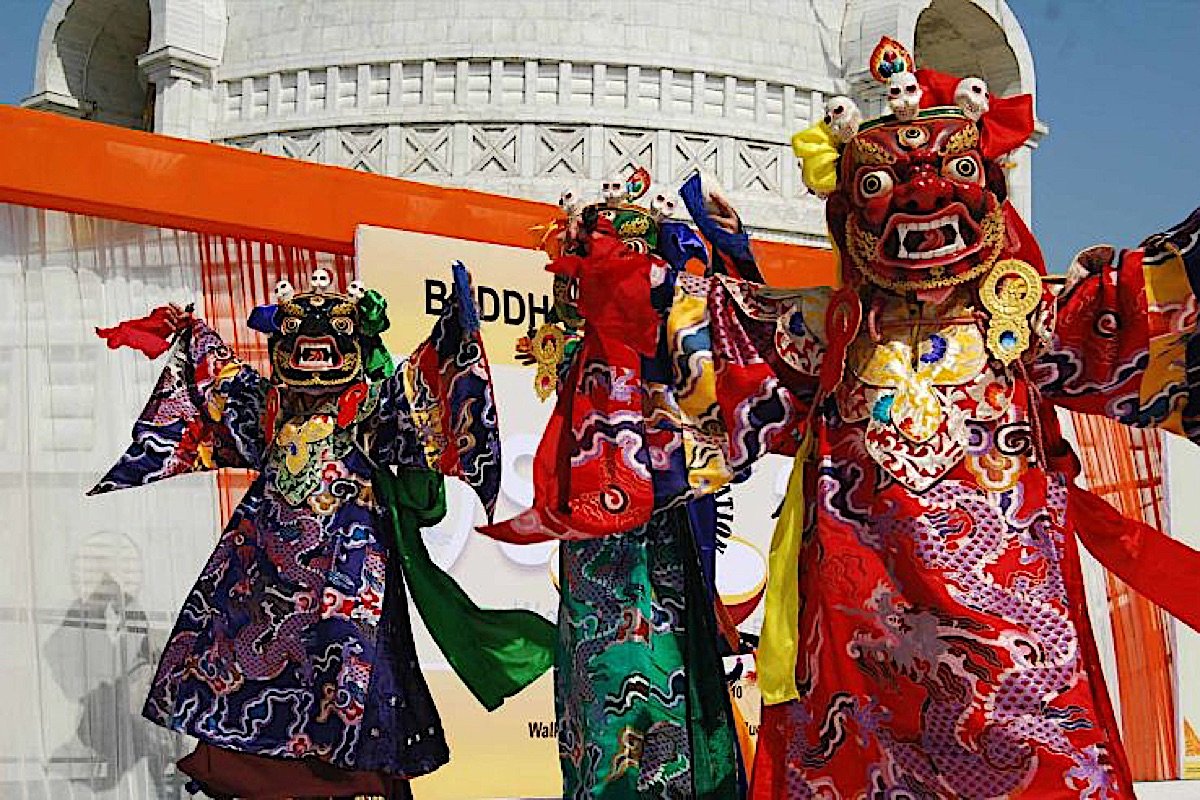
Traditionally, celebrants will prepare for Losar by
- Cleaning their houses (sweeping away the misfortunes of the previous year) — before New Year. It is not considered lucky to sweep for the first few days of the actual New Year as you might (sweep away the new good luck.)
- Buddhist monasteries and gompas will perform rituals on this last day, the famous mask dances, which symbolically drive away the negative forces of the old year.
- Traditionally, a person should not clean their house for the first few days of Losar to symbolically preserve the luck.
- Serious Buddhists might spend the last five or more days on purification practices such as Vajrasattva and Vajrakilaya. There will often be protector pujas, for example to Palden Lhamo, the great protectress of Tibet and the Dalai Lama. [More about Palden Lhamo here>>]
- In monasteries and traditional Tibetan Buddhist areas, Cham Dance is typically performed during Losar — a special Buddhist ritual dance that is performed in order to drive away evil spirits. See our feature on Cham Dance>>
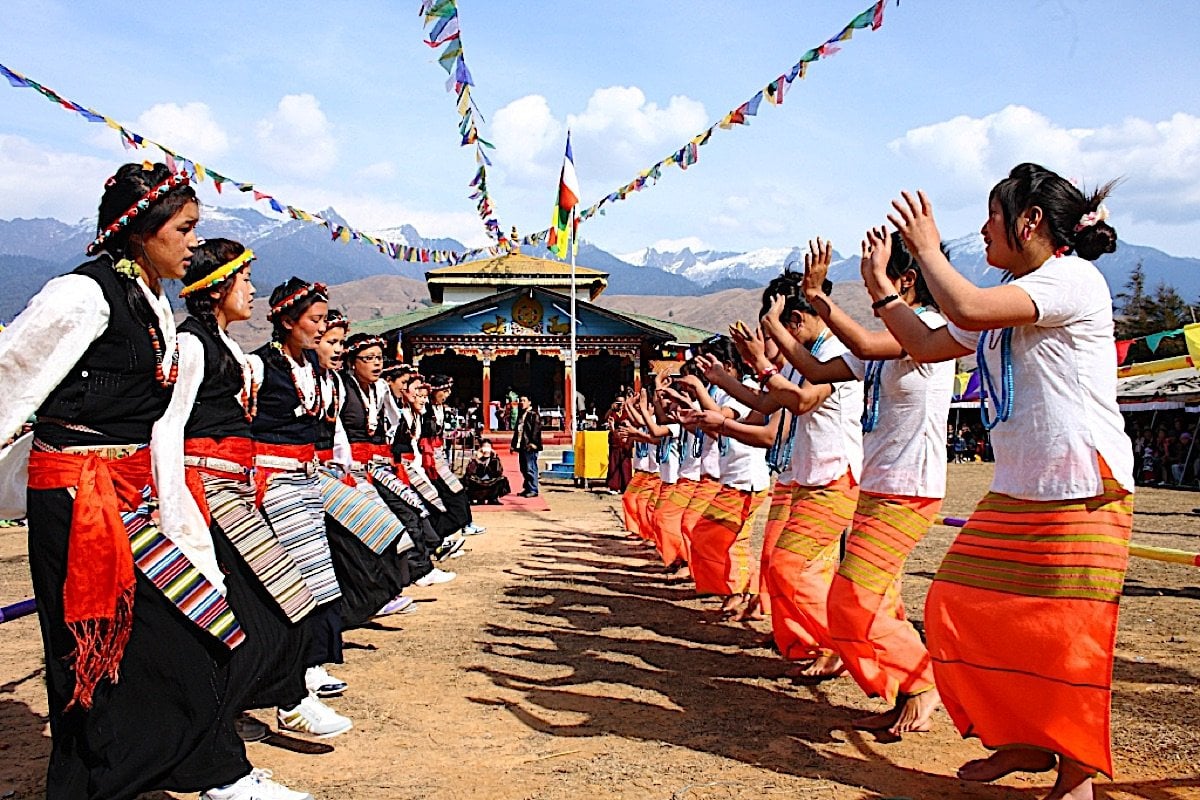
What are some of the traditions associated with LOSAR, and how can you participate even if you’re not Tibetan Buddhist yourself?
If you’re feeling a bit left out when it comes to celebrating traditional Tibetan Buddhist festivities, then Losar is the perfect celebration to get involved in!
Everyone can participate in this exciting event. It’s the traditional New Year for Tibetans and marks the beginning of their new year. It also marks 15 sacred days — but even if you’re not Buddhist, you can enjoy the festivities which range from traditional ceremonies to feasting to music, concerts and dance celebrations. If you have an opportunity to watch a traditional Cham Dance, don’t miss it!

Many celebrants share food with their friends and family or indulge in the ceremonial tsampa, an average dish of roasted barley flour mixed with butter and tea.
Astronomical observations act as a common tradition throughout LOSAR as well, which involve looking at the first sunrise, and often checking out your lunar horoscope for the year ahead.
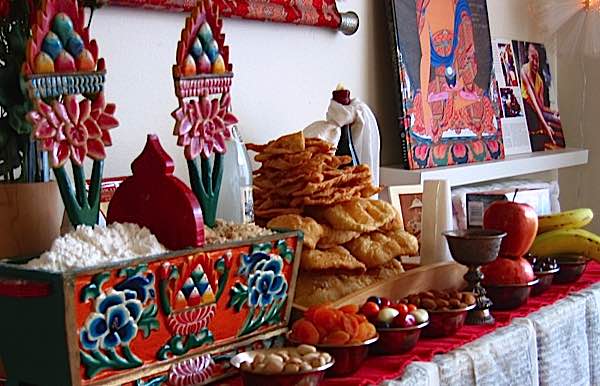
Tashi Delek! “Auspicious Wishes!”
Other traditions include exchanging gifts and wishing loved ones good luck during this time, offering khatas to older relatives, phoning all your family and friends even if you can’t see them to wish them well, with a hearty “Tashi Delek” (བཀྲ་ཤིས་བདེ་ལེགས) — which can translate as “auspicious wishes.”
What are some of the best ways to celebrate LOSAR 2023, whether you’re in Tibet or elsewhere in the world?
Celebrating Losar 2023 can be a blast, no matter where you are in the world! Think of Losar 2023 as an occasion to celebrate friendships and come together as one no matter which corner of the world you reside in!

On New Year’s Day, people usually wake up early and take a bath before donning new clothes. Afterward, they traditionally place offerings of dough called Torma on the family shrines to begin their annual praying ceremony. The creative designs created from this special pastry make for an exciting experience!
Usually, the family will come together to enjoy a celebration dinner, offering presents and tokens of appreciation. In Tibetan households, Kapse cake and Chang alcoholic drink are customary items served during this meal.
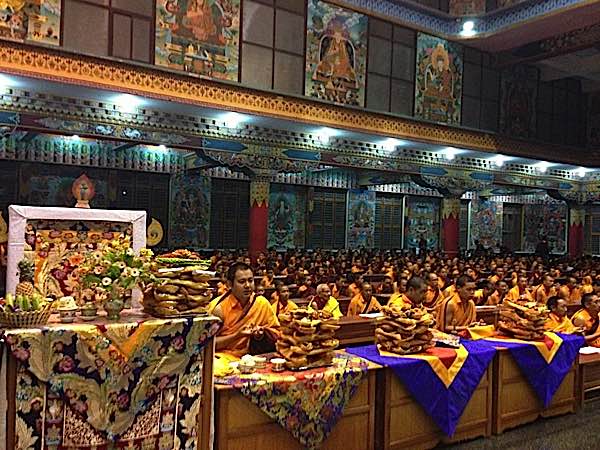
Traditionally, everything should be symbolically new — new clothes, new food (no leftovers!), new enthusiasm for the year ahead.
On the second day of Gutor, a multitude of religious rituals take place — the first day of the year is mostly family, the second day is for Dharma practice and to honor the Sangha. People are encouraged to honor and respect their teachers, Rinpoches, guides, and the monk and nun community by making donations to local monasteries, Dharma centers are other groups that help propagate Dharma.
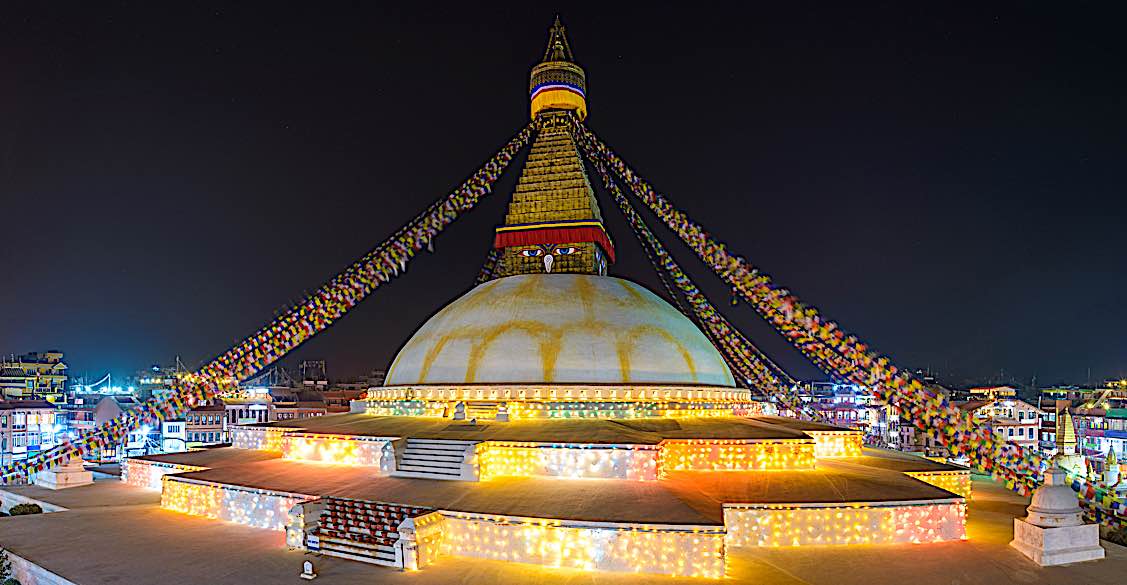
LOSAR Shrine Offerings
If you have a shrine, replace all offerings with fresh and elaborate new offerings.
The most iconic culinary item featured during Losar is the scrumptious New Year deep-fried cookies known as khapse — which make ideal shrine offerings as well! For offering, you will usually find piles of different types of khapse and often multi-colored candies. To make a stunning display for their shrines, we often adorn them with an abundance of cookies, candies, fresh fruit, and dried fruits to create aesthetically pleasing arrangements that are teeming with freshness.
All the “sensory” offerings should be as elaborate and fresh as possible to signify your generous offerings and help bring in an auspicious year, especially
- tea
- flowers
- beautiful objects
- sounds (try looping some celebratory music or mantras on a player)
- light — plenty of bright lights and cheeriness
- khatas (white scarves) which can be placed around statues or other objects on your shrine.
- seven (or eight) bowls of water to symbolize the sensory offerings (or, ideally, multiple rows of water bowls!) Waters represent purity and blessings.
Seven (or eight) bowls of water represent the seven sensory offerings (or eight if you include “sound”) which reflect how we welcome guests to a dinner:
- Argam: water for drinking
- Padyam: water for washing
- Pushpe: flowers
- Dhupe: scents or incense
- Aloke (or Dipe): lights or butter lamps
- Ghande: scented water or perfume
- Naividya: food
- Shabda: sound (this one is isn’t always a bowl, since we make sounds when we pray, celebrate and recite mantras.
The ultimate offering is your own Dharma practice and activities.

More articles by this author

Guru Rinpoche is ready to answer and grant wishes: “Repeat this prayer continuously” for the granting of wishes

VIDEO: Vajrapani Vajra Armor Mantra: Supreme Protection of Dorje Godrab Vajrakavaca from Padmasambhava
Search
Latest Features
Please support the "Spread the Dharma" mission as one of our heroic Dharma Supporting Members, or with a one-time donation.
Please Help Support the “Spread the Dharma” Mission!

Be a part of the noble mission as a supporting member or a patron, or a volunteer contributor of content.
The power of Dharma to help sentient beings, in part, lies in ensuring access to Buddha’s precious Dharma — the mission of Buddha Weekly. We can’t do it without you!
A non-profit association since 2007, Buddha Weekly published many feature articles, videos, and, podcasts. Please consider supporting the mission to preserve and “Spread the Dharma." Your support as either a patron or a supporting member helps defray the high costs of producing quality Dharma content. Thank you! Learn more here, or become one of our super karma heroes on Patreon.
Lee Kane
Author | Buddha Weekly
Lee Kane is the editor of Buddha Weekly, since 2007. His main focuses as a writer are mindfulness techniques, meditation, Dharma and Sutra commentaries, Buddhist practices, international perspectives and traditions, Vajrayana, Mahayana, Zen. He also covers various events.
Lee also contributes as a writer to various other online magazines and blogs.






